WHAT WE ATE
- Tonkotsu Ikkyu Tonkotsu Ramen (old version), 55/100 (23 Feb 2022, Ramen Champion Bugis+)
- Tonkotsu Ikkyu Tonkotsu Ramen (new version), 60/100 (04 Nov 2023, Ramen Champion, Bugis+)
- Tonkotsu Ikkyu White Island Ramen, 65/100 (23 Feb 2022, Ramen Champion Bugis+)
- Buta God Cheese Ramen, 60/100 (04 Nov 2023, Ramen Champion, Bugis+)

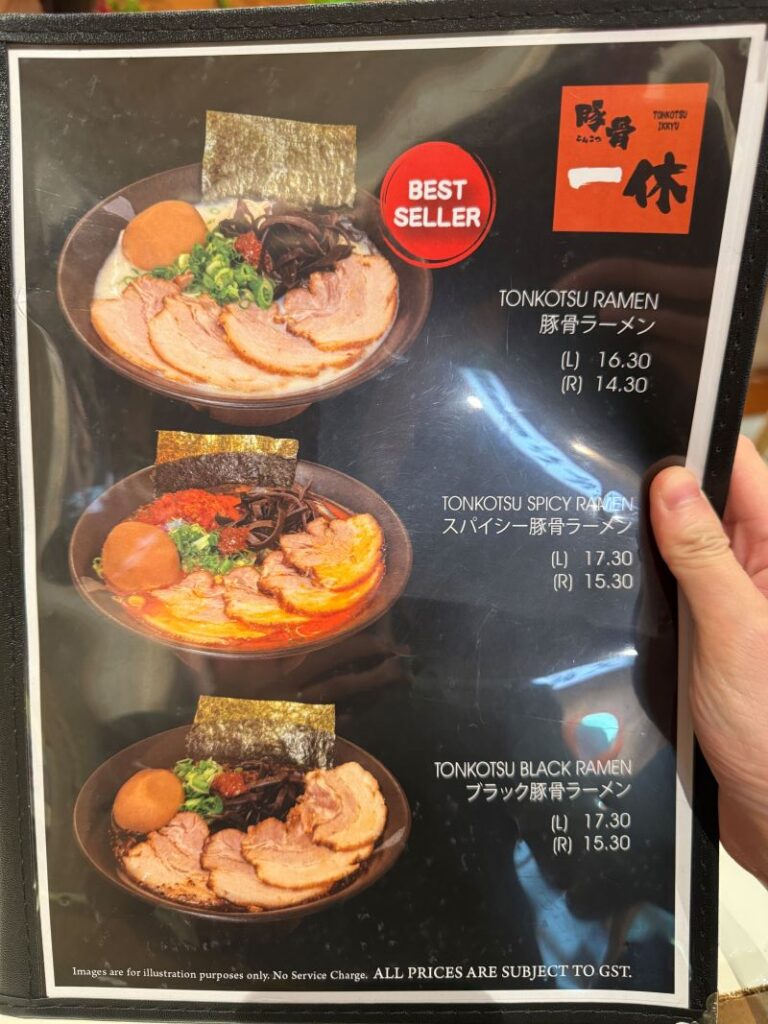
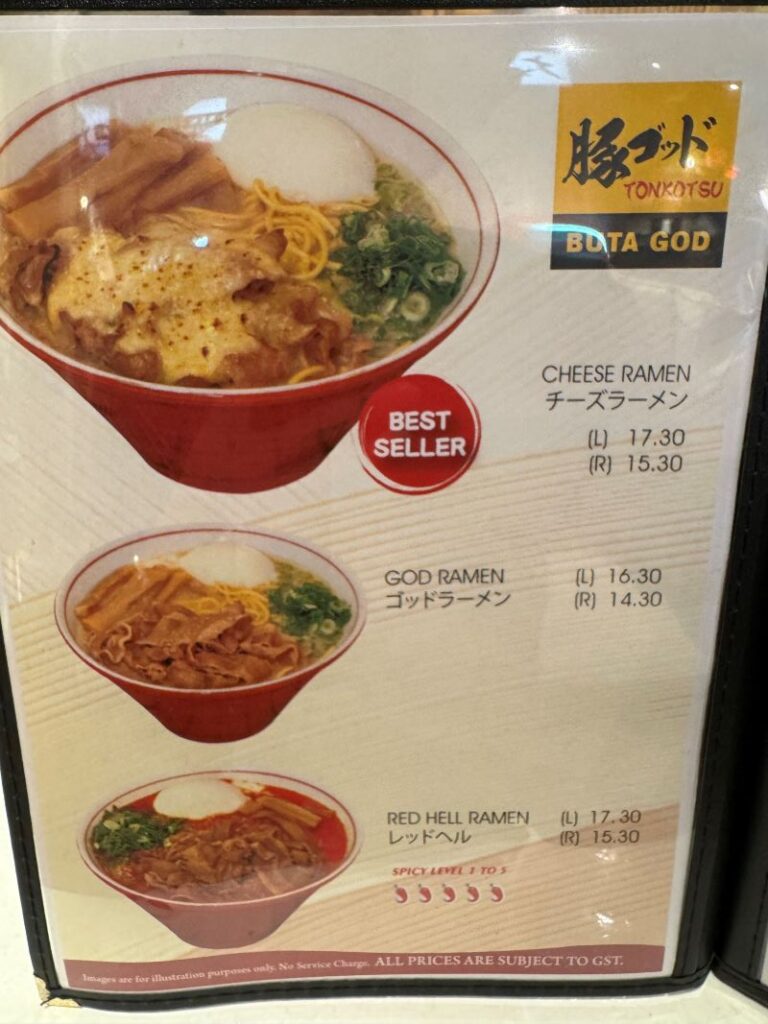
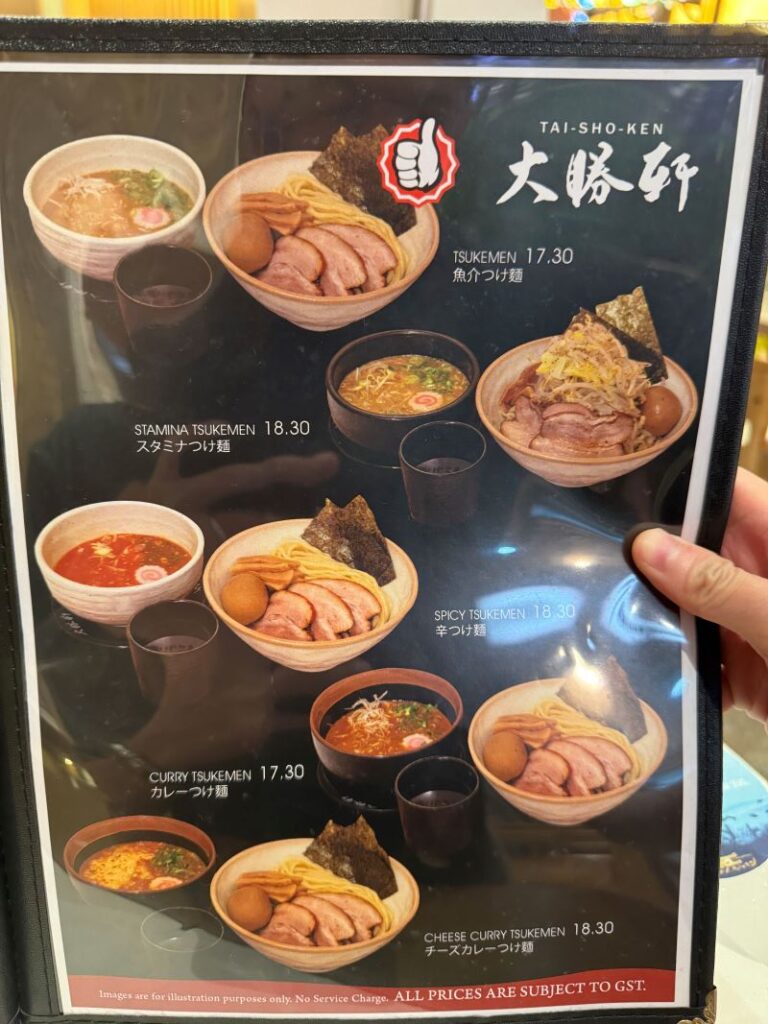
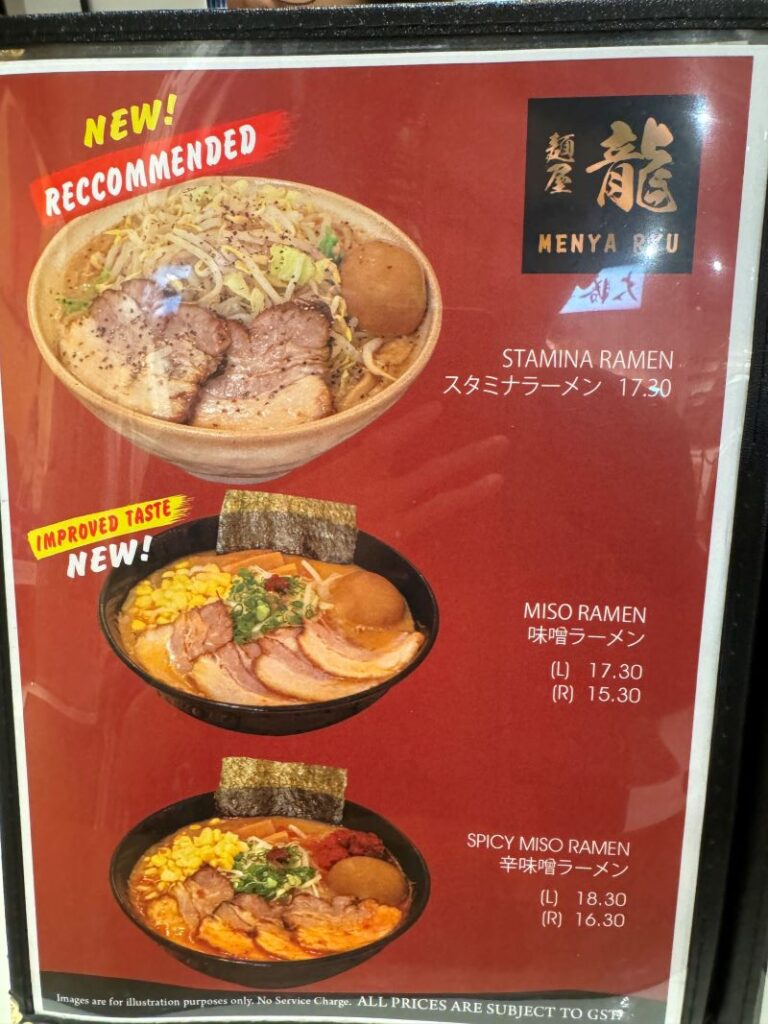
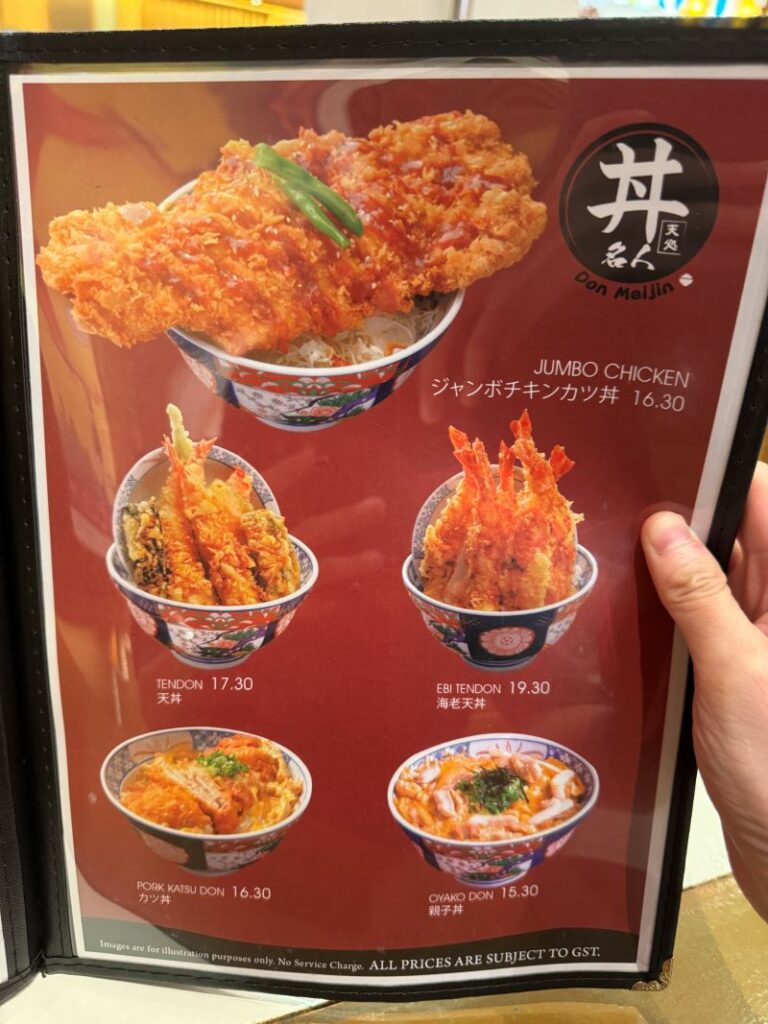
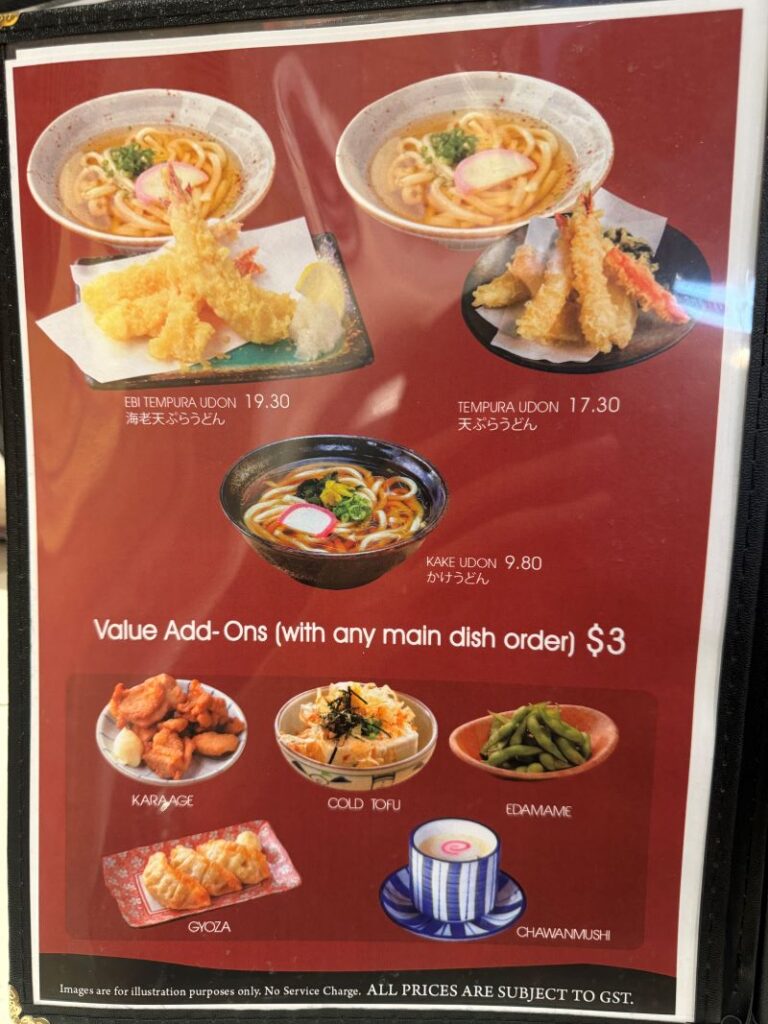
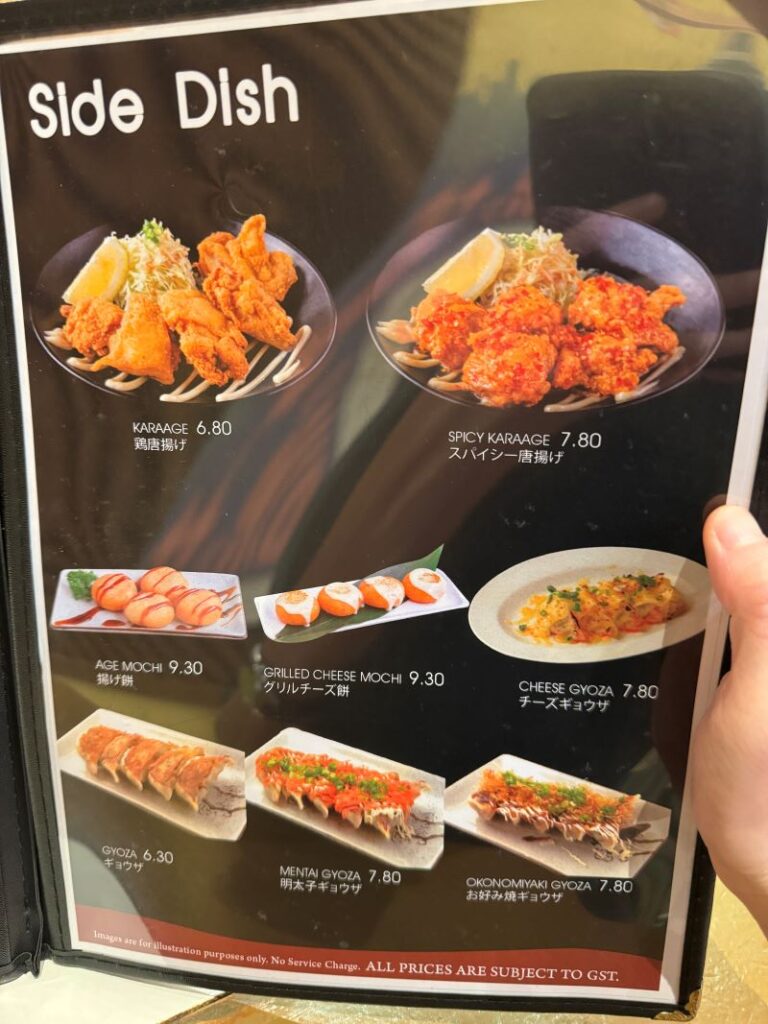
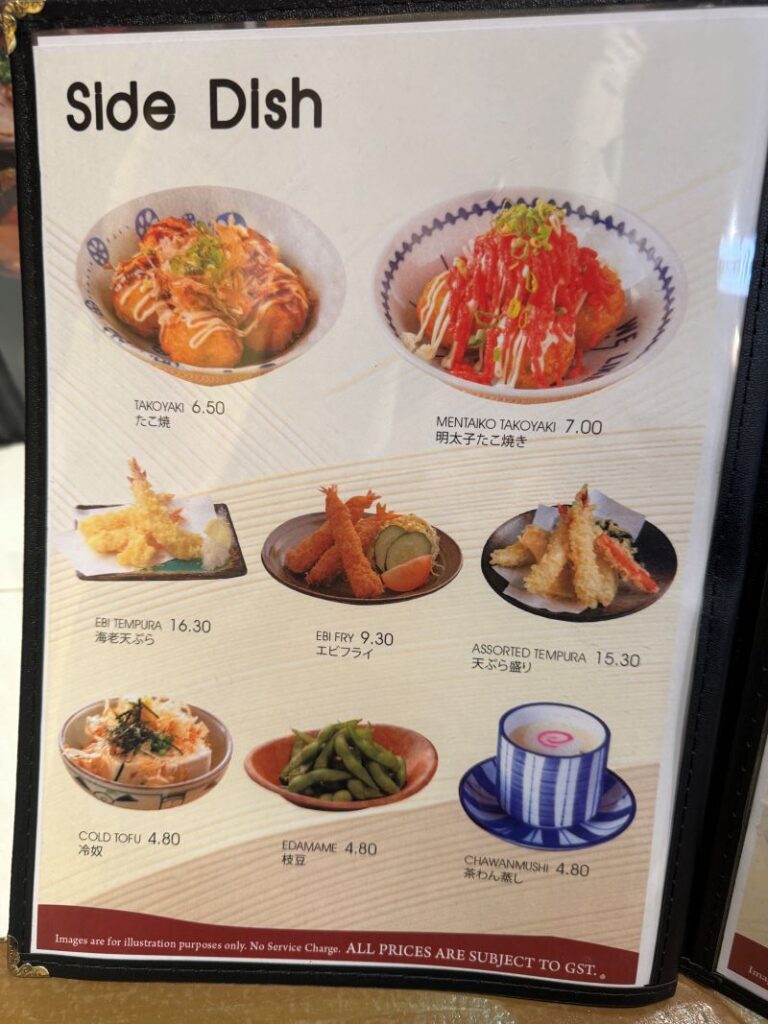

Ramen Champion has served as a platform for the birth of numerous excellent ramen establishments, with Ikkousha being a notable example. It emerged as a strong contender in the Singapore edition of Ramen Champion and swiftly established its own successful restaurant in town after securing several consecutive victories. However, the Ramen Champion concept seems to have lost its initial allure. Gone are the voting system, the long queues, and the vibrant atmosphere. During our visit, the outlet we experienced appeared to embrace a shared kitchen concept. Despite these changes, one can only hope that the quality of the ramen continues to live up to its former glory.
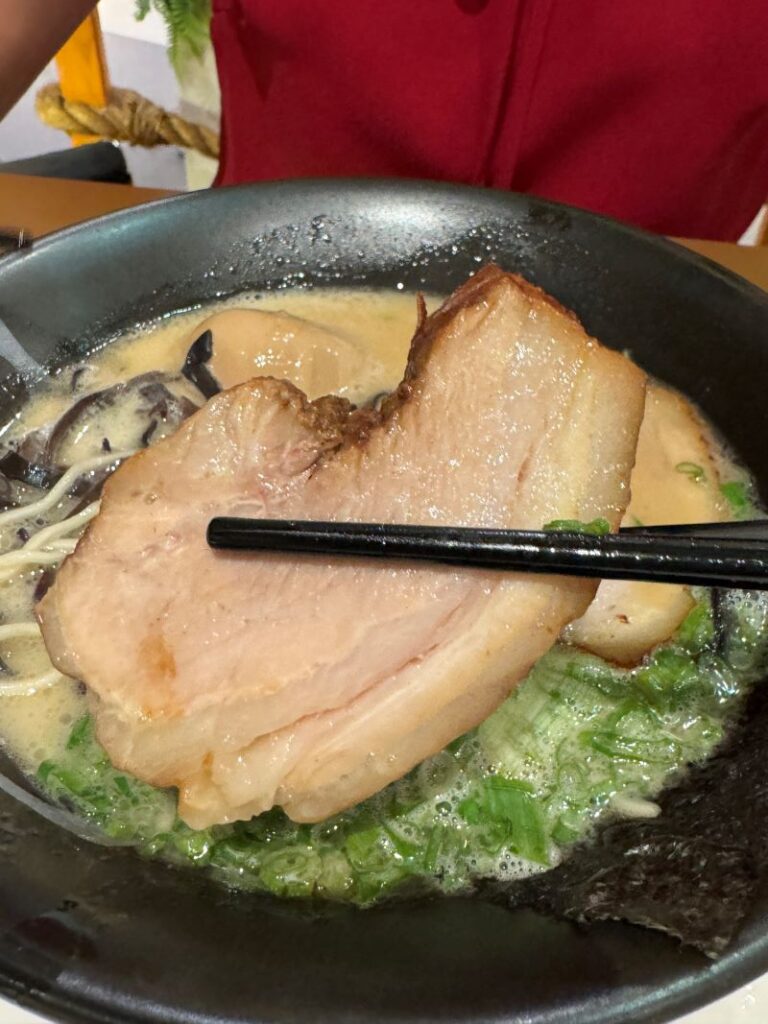

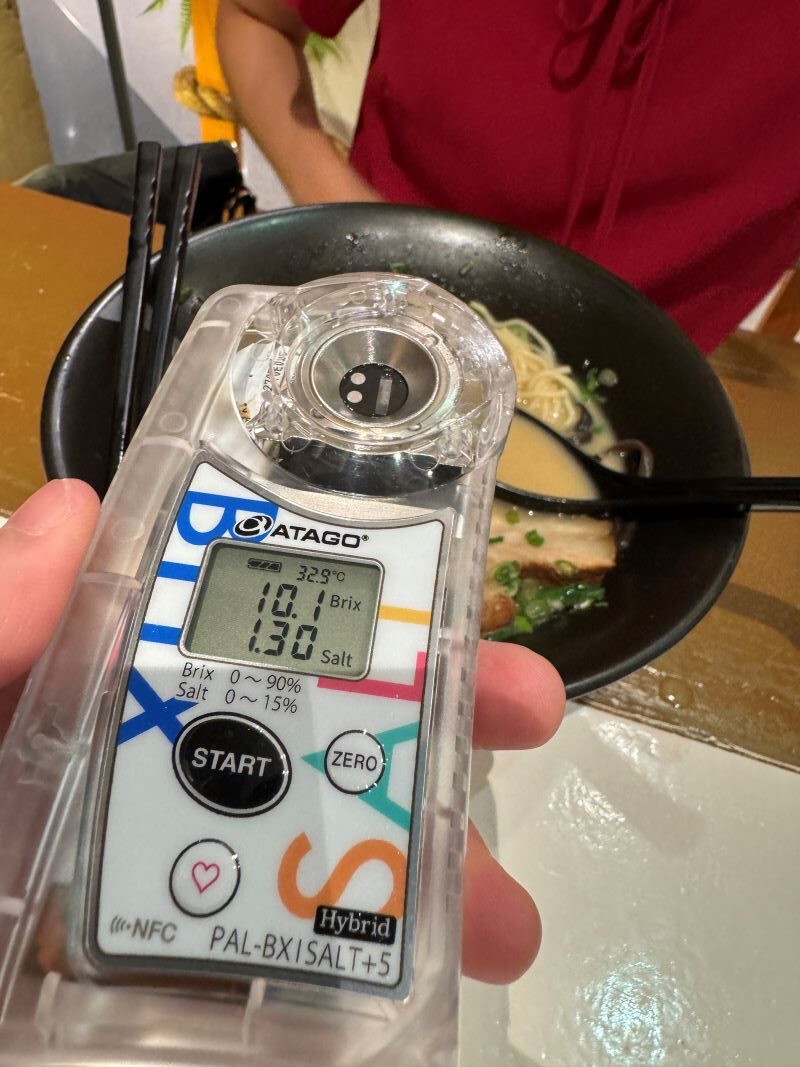


TONKOTSU IKKYU TONKOTSU RAMEN (NEW VERSION) 60/100 points
Noodles – 20/35
The noodles are slender, wavy, and possess a medium softness. While the bite is average, the noodles boast a subtle wheaty taste. Overall, there’s no noticeable Kansui flavor which is great.
Soup – 20/35
The broth, pork-based and reminiscent of classic Tonkotsu, kicks off with a savory punch followed by the gentle sweetness characteristic of Tonkotsu. However, similar to our experience with other ramen varieties, it leans towards being salty and carries a robust flavor that might be too heavy for those who are not used to Tonkotsu.
Meat – 15/20
The meat takes the form of a thick pork belly slab. The lean portions exhibit a firm, slightly chewy texture with flavors unfolding as you chew. On the other hand, the fatty sections are soft and jelly-like, melting in your mouth. The marination strikes a pleasing balance of savory and sweet, reminiscent of Japanese braised pork but with a stronger profile than typical chashu marination.
Toppings – 5/10
The toppings feature seaweed, black fungus, negi, and tamago. The black fungus adds a nice crunch, but the tamago disappoints as it is over-marinated, excessively salty, and overwhelmed by the dominating mirin taste.

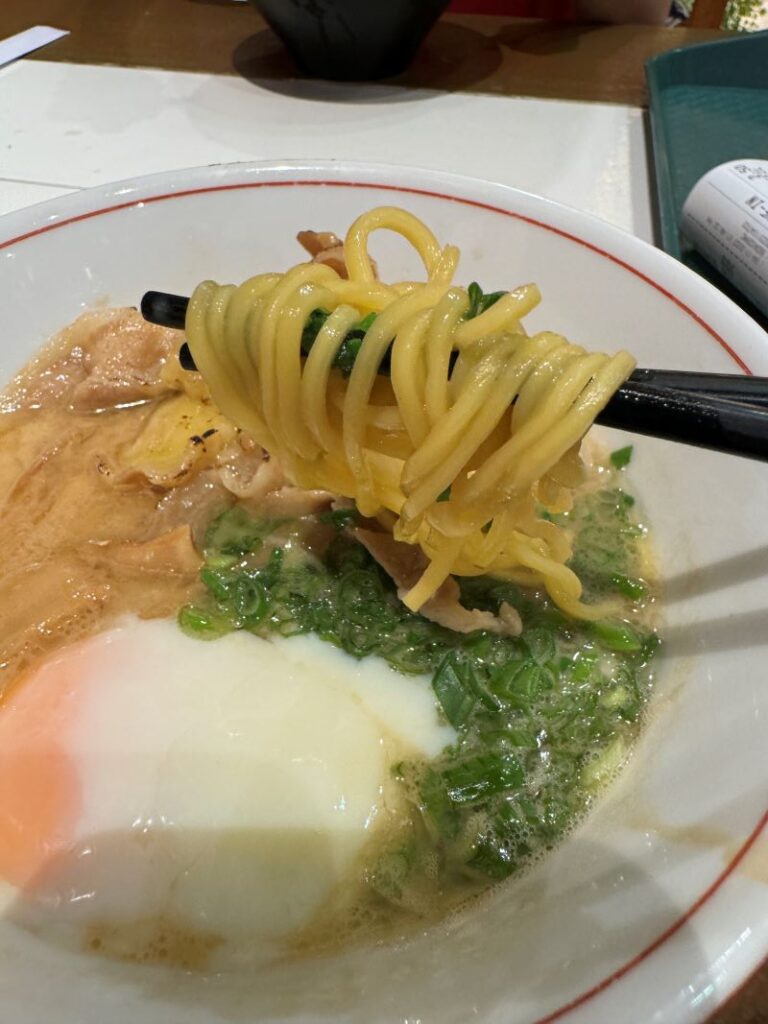


BUTA GOD CHEESE RAMEN 60/100 points
Noodles – 15/35
The noodles are thick, wavy, and possess a vibrant yellow hue. While their texture is a bit softer than my preference, they are still acceptable. The noodles themselves carry a noticeable saltiness that complements the broth’s saltiness. A subtle hint of kansui flavor is present but manageable.
Soup – 25/35
The soup boasts rich emulsified fats on the surface. It starts with a robust savory note and is followed by a touch of sweetness from the Tonkotsu broth. Despite the name “cheese ramen,” the cheese seems more of a simple melted topping on the sukiyaki pork and doesn’t blend into the broth completely – a positive aspect. Overall, the soup offers a complex and heavy flavor profile.
Meat – 15/20
The sukiyaki-style meat topping lives up to expectations, delivering tenderness and a well-executed marination that infuses it with savory sweetness. Some parts of the meat are drizzled with melted cheese, adding a unique level of savoriness.
Toppings – 5/10
The toppings include slightly pungent bamboo shoots, fresh negi (green onions), and a perfectly cooked onsen egg. The egg complements the flavorful broth and salty noodles effectively.


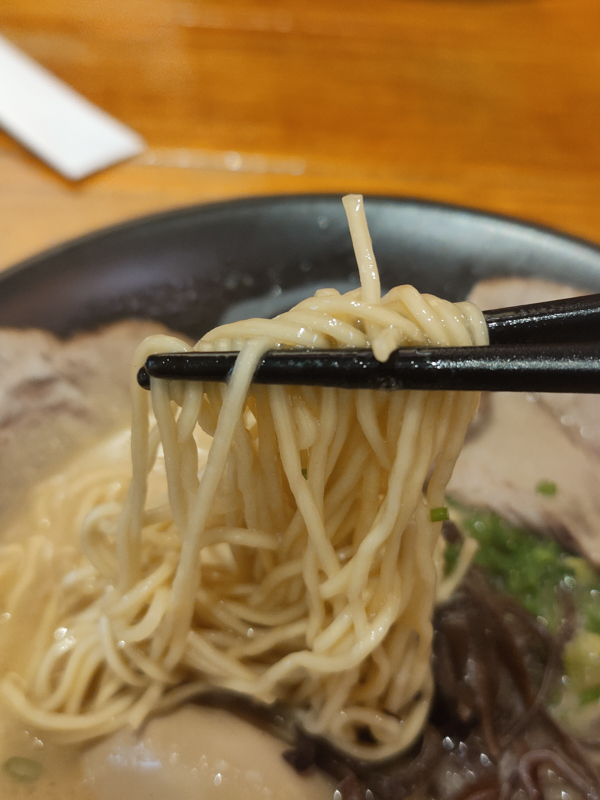
TONKOTSU IKKYU TONKOTSU RAMEN (OLD VERSION) 55/100 points
Noodle – 25/35
The thin Hakata-style noodles used in this ramen are visually appealing and possess a pleasing texture. Cooked to a firm consistency, they offer a satisfying chew. However, despite their overall quality, there is a slight lack of depth in terms of flavor and bite, leaving room for improvement.
Soup – 25/35
The soup captures attention with its remarkable thickness and richness, indicating extensive hours of careful brewing. Its velvety texture coats the palate, delivering a robust and hearty sensation. Those who appreciate a pronounced porky essence will find it to their liking, reminiscent of the distinct character found in Ikkousha’s renowned broth. The frothy appearance adds to its allure, enticing the taste buds with its promise of indulgence.
Meat – 5/20
While the Chashu slices are commendably generous in portion and boast a delicate thinness, they fall short in terms of flavor and tenderness. Disappointingly, the Chashu lacks the savory essence that elevates this ramen component to greatness. Instead, it possesses a slight chewiness that detracts from the overall enjoyment, leaving a sense of emptiness after each bite. It’s akin to the lingering disappointment when chewing gum that has lost its flavor, leaving you longing for more.
Toppings – 0/10
The toppings, unfortunately, fail to make a memorable impression. Let’s begin with the eggs, a personal point of contention. While visually appealing, the flavor profile disappoints due to an overpowering taste of Mirin and a lack of sufficient Shoyu. The eggs have been marinated for an extended period, resulting in a somewhat one-dimensional taste that fails to excite the palate. Texture-wise, they remain acceptable, but the overall composition feels unbalanced. Moving on to the black fungus, its crispness is notable, providing a pleasant textural contrast. However, it fails to deliver any distinctive flavors or exceptional qualities, ultimately fading into the background without leaving a lasting impression.
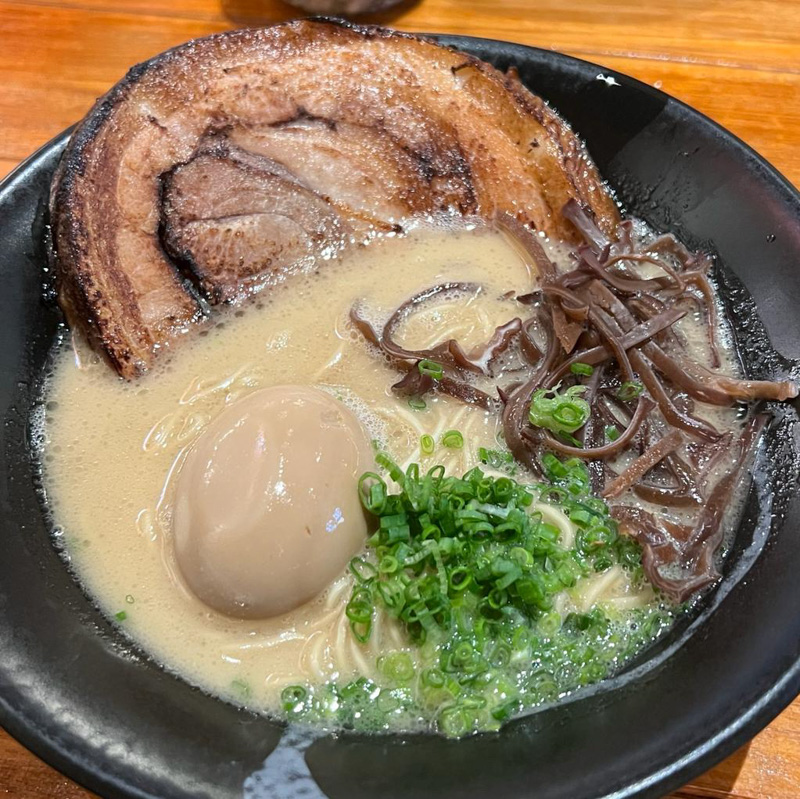

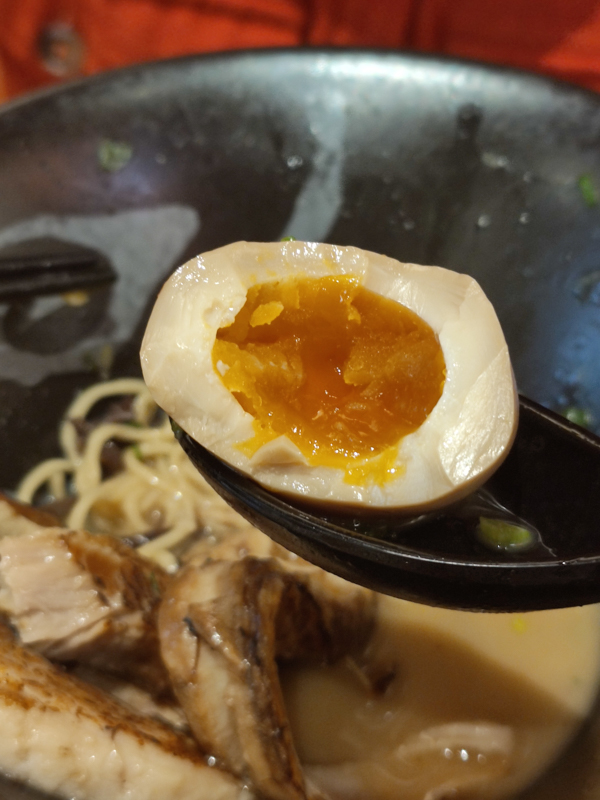
TONKOTSU IKKYU WHITE ISLAND RAMEN 65/100 points
Noodle – 25/35
The noodles used in this ramen are the thin Hakata type, showcasing a visually appealing appearance. Upon tasting, they offer a pleasant firmness and a commendable texture. However, a touch more resilience and bite would be beneficial, adding an extra dimension to the overall experience.
Broth – 30/35
The broth in this White Island Ramen is an enigma, differentiating itself from the typical Tonkotsu variety. As I savor each spoonful, a distinct grittiness emerges, accompanied by a lingering aroma that hints at charred elements. Speculating on the source, I surmise the presence of garlic, though the soup’s white color diverges from the expected darkness of broths infused with burnt garlic. It possesses an alluring quality reminiscent of the famed “wok hey” flavor, evoking images of expert stir-fry techniques. The resulting broth is a captivating symphony of layered flavors and complexities. It strikes a delicate balance between richness and savory notes, with a subtle touch of sweetness preceding the harmonious entrance of the distinctive “wok hey” essence.
Meat – 10/20
Prepare to be awestruck by the sheer magnitude of the Chashu in this dish, surpassing any you may have encountered in Singapore or even Japan. Its impressive size sparks a carnivorous reverie, a feast for the eyes of meat enthusiasts. The skillful charring on the exterior imparts an irresistible smoky essence without veering into the realm of overpowering burnt flavors. This exterior allure, however, seems to contain the bulk of the taste, as the flavors fail to permeate the meat entirely. It is akin to savoring the crispy crust of a roast pork dish (“Sio Bak”) while finding the inner portion comparatively ordinary. The Chashu, although possessing commendable thickness, leans towards a tougher and chewier texture, akin to the lingering resilience of chewing gum.
Topping – 0/10
Similarly disappointing are the eggs, failing to leave a lasting impression. The black fungus, while providing a satisfying crunch, regrettably fails to offer any remarkable or distinct flavors, blending into the background without making a significant impact.
Overall, this ramen harbors a captivating allure that distinguishes it from the crowd. The well-balanced charred taste leaves an indelible mark, infusing the broth with a delightful complexity. For those embarking on a visit to Ramen Champion, this unique creation is undoubtedly a worthy contender, deserving of exploration and culinary appreciation.
DISCLAIMER
One man’s meat is another man’s poison.
Find out more about our palettes and how we evaluate our ramen here. 😉

